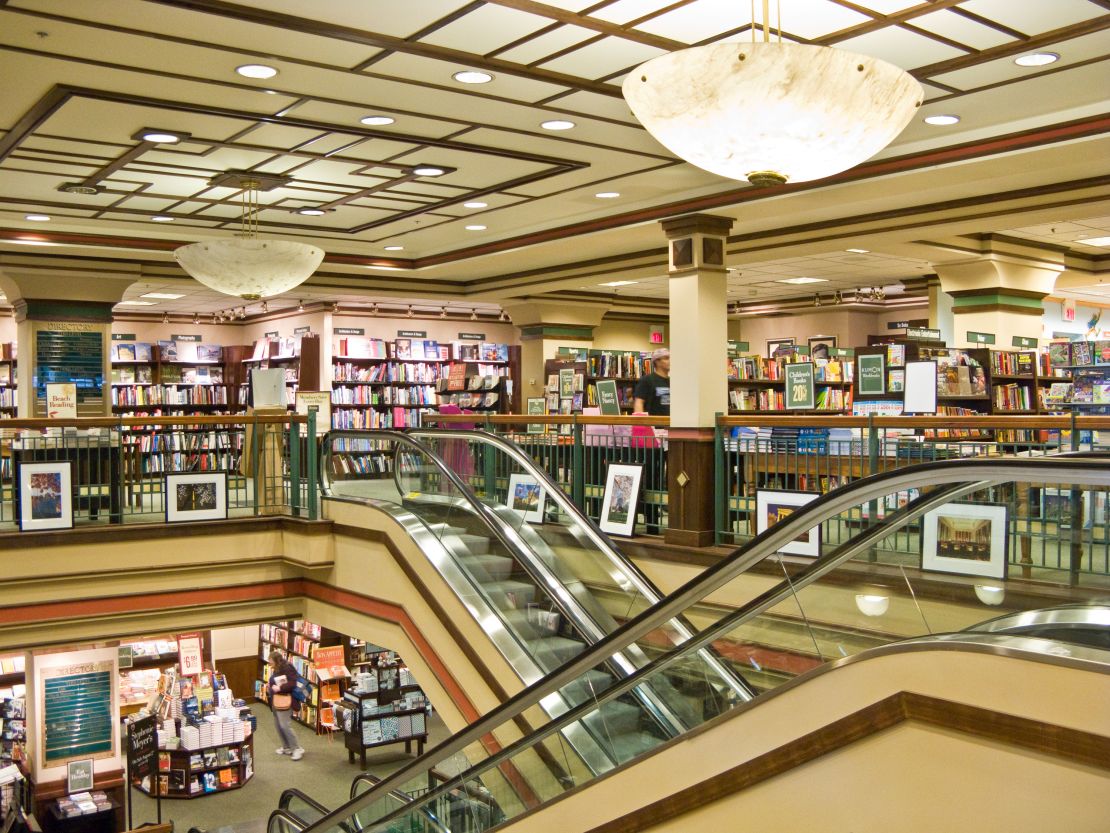A massive, multi-story building in the Washington, DC, neighborhood of Georgetown welcomed back a former occupant this month that had been gone for over a decade.
In a move that’s perhaps more symbolic than business-minded, Barnes & Noble, America’s largest retail bookseller, has reclaimed the flagship store it vacated in 2013.
It’s just one of over 60 new locations opening this year as part of an ambitious expansion plan that seemed impossible before CEO James Daunt took over in 2018.

Daunt referred to the return to the Georgetown branch as a “dramatic example of the ongoing revival of brick-and-mortar bookstores.”
Before Daunt’s arrival, Barnes & Noble appeared to be on the same path as most struggling US retailers. Sales had plunged — leading to hundreds of store closings — as consumers continued buying from online retailers like Amazon.
But Barnes & Noble would revamp its business model. It began prioritizing customer preferences over promotions and catered to a community of readers who engage on social media.
The bookstore renaissance
Daunt sets himself apart from his predecessors by describing himself as a bookseller instead of a retailer — a seemingly minor yet important distinction for the company’s “books first” approach.
That meant leaving the decision on what books to stock and display to each individual store and abandoning the “one-size-fits-all” model.
“The problem with Barnes & Noble when I took it over was that the bookstores themselves weren’t very good,” Daunt told CNN. “I think a proper bookstore has to be curated, and that is the essence of one of the core skills of what it is to be a bookseller. You are trying to have the titles that you think will most interest your customers and display them.”
Daunt’s strategy was a gamble. Not only was he relying on the judgment of each store’s manager, he was also forgoing revenue large publishers pay for display spaces that promote new releases.
But the adoption of the indie bookstore model has paid off. Foot traffic data for Barnes & Noble show that visits are up by 7% since 2019, according to location analytics company Placer.ai.
“We’re relaxed enough now as a retailer,” said Daunt. “In the past, we’d have probably tried to put a process around it so we had some agency in all of this from a central perspective. Whereas, in fact, the sensible thing to do is just have fun in each individual store.”
Daunt said that Barnes & Noble’s model of relying on the judgment of individual booksellers has been met with considerable success — a completely different story from its competitor Amazon when it entered the retail book market with Amazon Books locations in 2015.
Amazon Books adopted a “ratings-first” approach by stocking books that sold well on its website, but it failed to entice customers and eventually shuttered all locations in 2022.
The role of #BookTok
Daunt credits part of Barnes & Noble’s recent success to BookTok, a TikTok subcommunity that emerged in 2020 when influencers introduced new finds and shared book recommendations.
The hashtag #BookTok has over 40 million posts and continues to grow, and its influence reaches beyond its digital space.
Shannon DeVito, head of books at Barnes & Noble, says that beyond reigniting a love for reading, the BookTok trend has guided stores on what to stock.
“A lot of stores took advantage of the heyday of BookTok and created tables and specific displays of varying sizes because they had that flexibility, which is another beautiful thing about the stores really determining their own destiny,” she said.
It’s also driving foot traffic to stores. Kendra Keeter-Gray, a BookTok content creator with over 100,000 followers, told CNN that she and her friends could spend anywhere between 30 minutes to a few hours inside a Barnes & Noble, usually in the BookTok section where they trade recommendations and flip through currently trending novels.
“When you go to Barnes, it’s like an excursion almost. I would equate it to when I was little and my parents would take me to Six Flags,” she said.

Barnes & Noble has also tapped into BookTok’s fandom by hosting community events, from midnight release parties to costume competitions.
“Stores are deciding to do events for their area where we’re seeing turnouts of hundreds of people for book releases,” DeVito said. “It’s really pushed a level of excitement around book releases that frankly hasn’t been here since Harry Potter.”
But more than that, the rebirth of Barnes & Noble’s stores confirms the company’s belief that there remains a consumer appetite for physical books.
Like most bookstores, Barnes & Noble’s main source of revenue is physical books as well as limited editions of books exclusive to the retailer (often featuring special art or extra scenes).
“There is always something that happens that is supposed to be the harbinger of the death of books, but what we’ve seen the last four years is completely the opposite,” said DeVito. “Our future outlook is really positive, which is not something I could have said a few years ago.”







